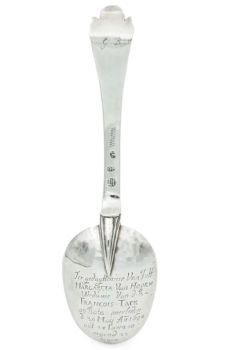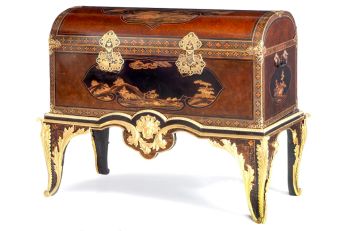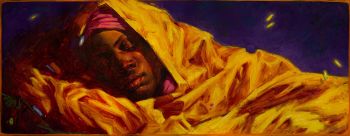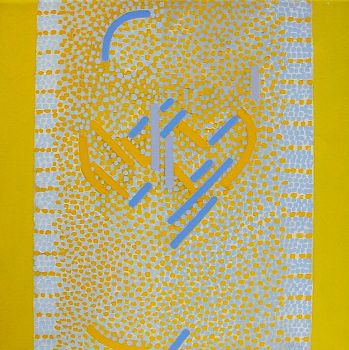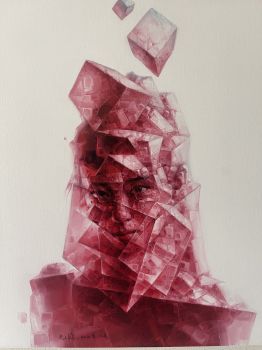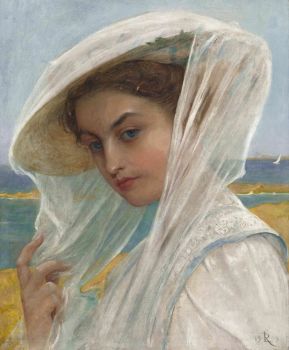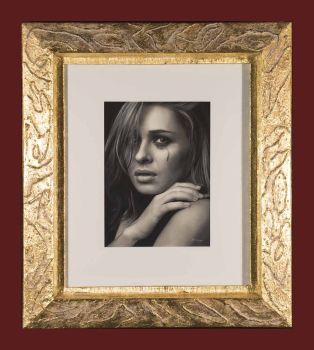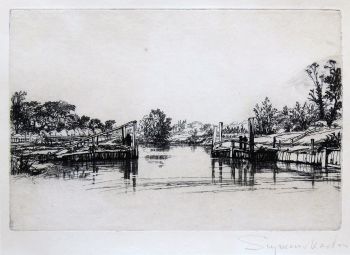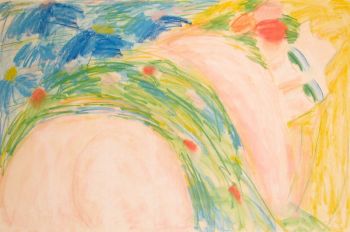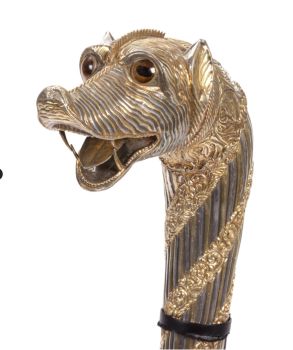Four portraits of women of Guadeloupe 1769
Joseph Savart
PapierPastell
40 ⨯ 34 cm
Preis auf Anfrage
Zebregs & Röell - Fine Art - Antiques
- Über KunstwerkEach signed, dated, and annotated À la Guadeloupe, Savart invt 3 mars 1769 and titled respectively ‘la Négresse’, ‘la Mestisse’, ‘la Cabresse’, and ‘la Mulatresse’ on the backing
One drawing has a label reading BULDET - Rue de Gesvie au grand Coeur - Vend les vraix Verres de glace blanc, Estampes, Bordures de toute facons. A PARIS on the backing
Pastels on paper, H. 40 x 34 cm (each)
Provenance:
Private collection, Belgium (at least since the mid-19th century); thence by descent
Included is a letter from the Louvre to the ancestor of the previous owner, dated August 8th 1929, in which is stated that the Louvre, nor the Cabinet d’Etampes in Brussels, are aware of an artist named Favart. The owner of the drawings, Mr. Brisque, misread the signature and made a wrong enquiry.
For the article by Séverine Laborie on these four pastels see:
Joseph Savart: Four Creole women - Quatre femmes Creoles - Über Künstler
Joseph Savart, geboren 1735 in Reims und gestorben am 25. Oktober 1801 in Saint-Pierre (Martinique), ist ein französischer Maler.
Marie Joseph Hyacinthe Savart wurde 1735 in Reims als Tochter von Maître Pierre Savart, Staatsanwalt in der Vogtei von Reims, und Catherine Husson geboren. Er ließ sich in Guadeloupe nieder und heiratete am 22. Oktober 1765 Christine Élisabeth Rison, Witwe eines Webers in Basse-Terre.
Er malte insbesondere das Pastell Quatre Femmes Creoles vom 17. November 1770, das einzige erhaltene Werk von ihm, das 2009 auf dem Kunstmarkt erschien. Dieses Werk wurde mit staatlicher Unterstützung vom Generalrat von Guadeloupe erworben bereichern die Sammlungen des Departementmuseums Victor-Schoelcher in Pointe-à-Pitre.
In den 1770er Jahren ließ sich Savart auf Martinique nieder, musste jedoch während der Revolutionszeit die Insel verlassen, um vor den Konterrevolutionären nach Dominica zu fliehen. Er kehrte nach Martinique zurück und starb dort am 25. Oktober 1801 in Saint-Pierre.
Laut Séverine Laborie stellen die Frische der Kleidung, die Feinheit der Stoffe und die Goldschmucksets der vier Kreolinnen, die trotz ihrer unterschiedlichen Hautfarben nebeneinander dargestellt werden, eine Herausforderung für eine auf Farbvorurteilen basierende Gesellschaft dar. Dieses Werk kann als republikanisches Manifest für die Gleichheit der Völker gesehen werden, das das Handeln des Malers zur Zeit der Französischen Revolution ankündigt.
Sind Sie daran interessiert, dieses Kunstwerk zu kaufen?
Related artworks
Unknown artist
A Surinam-themed Amsterdam long-case clock1746 - 1756
Price on requestZebregs & Röell - Fine Art - Antiques
 Curated by
Curated byGallerease Magazine
Unknown artist
A Dutch colonial Indonesian betel box with gold mounts1750 - 1800
Price on requestZebregs & Röell - Fine Art - Antiques
Unknown artist
AN UNUSUAL INDONESIAN LOBBED SILVER DISHlate 17th
Price on requestZebregs & Röell - Fine Art - Antiques
Unknown artist
A silver spoon commemorating Juff’ Margareta van Hoorn1656 - 1694
Price on requestZebregs & Röell - Fine Art - Antiques
Unknown artist
Japanese transition-style lacquer coffer 1640 - 1650
Price on requestZebregs & Röell - Fine Art - Antiques
1 - 4 / 24- 1 - 4 / 24
- 1 - 4 / 24
- 1 - 4 / 24
Unknown artist
An Indian part-gilt silver-clad ceremonial sceptre or mace with a tiger’s head1850 - 1900
Price on requestZebregs & Röell - Fine Art - Antiques
 Curated by
Curated byDanny Bree
Dutch School
Arrival of a Dutch East Indiaman in the Table Bay18th century
Price on requestZebregs & Röell - Fine Art - Antiques
Abraham Salm
Twenty-four chromolithographs of Java after A. Salm”1801 - 1876
Price on requestZebregs & Röell - Fine Art - Antiques
1 - 4 / 12





















